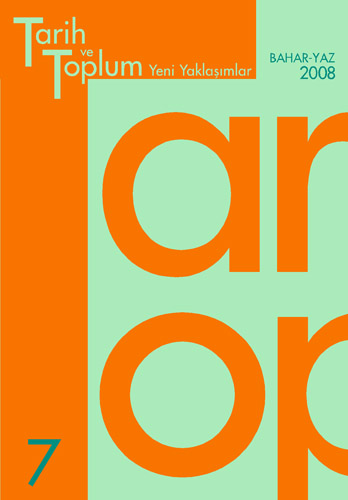Modernization and image of the sultan: II. Mahmud’s portraits of Heinrich Schlesinger
FUNDA BERKSOY
During the rign of Mahmud II (1808-39) the sultan portraits began to be produced in a new fashion in accordance with the preferences of the Ottoman palace. Besides the little tasvir-i hümâyun medallions or medals on which there were portraits of the sultan, it is in these years that the sultan portraits were created, for the first time, in monumental dimensions. The portraits of the second group contain a European iconography and represent Mahmud II as riding a horse or standing in a palace interior. Heinrich Schlesinger’s two portraits in the Topkap› Saray› Museum in Istanbul (1837) and Musée de Versailles (1839) are examples to this new approach that visualize the modernisation move led by Mahmud II. In addition to their artistic value, both paintings are also important for their quality of being a part of a strategy of the sultan to re-construct the legitimacy and power of a re-structuring state through the local and foreign onlookers.
Keywords: Sultans portraits, Heinrich Schlesinger, sembolization of power.
* * *
The Power of Rumor: Great Panic in İstanbul and Financial Crisis in 1861
HÜSEYİN AL - ŞEVKET KAMİL AKAR
This paper aims to explain socio-psychological factors beyond economic factors behind the financial crisis that broke out in December 1861 and caused great turmoil in İstanbul. The financial crisis of 1861 would be expected to affect a small group (around Galata Bourse), but it was spread to public by rumors. In particular, after caime (paper money) lost its value quickly and became invalid as a payment means in the market, people rushed into bakeries and fights for bread broke out in streets. Beyond these effects, the crisis created anxiety in European capitals that there would be a disorder in İstanbul. Due to the declaration of martial law by Ottoman government, İstanbul slipped out of a social turmoil.
Keywords: financial crisis, panic, caime (paper money), rumor, diffusion of rumor, fight for bread, government intervention to market, enactment process.
* * *
Turcification of the labor force in the licensed foreign companies in Turkey (1923-1930)
MURAT KORALTÜRK
This study sheds light on the Turkification practices of the labor force in the period between 1923 and 1930. The study focuses particularly on the elimination of the non-Muslim Turkish subjects and foreign citizens from the labor market in Turkey, who were hired by the licensed foreign companies. In this context, the article discusses in detail various related themes: the attempts of Turkification of economy under the rule of the Committee of Union and Progress, the continuity of National Economy policy from the Unionist to the Kemalist cadres, the recommendations on Turkification of economy discussed in the İzmir Economy Congress, the attempts to Turkify labor force in the licensed foreign companies, the agreements between the official bodies and the foreign companies on dismissal of the non-Muslim workers, the legitimacy of the Turkification practice, the numbers of the workers dismissed from foreign companies and other enterprises, reasons behind Turkification of the labor force, the attitudes of the workers and their resistance against Turkification practices.
Keywords: National Economy, Turkification of Economy, Early Republican Era, Turkish Nationalism, Licensed Companies, Foreign Capital, Licensed Foreign Companies, Foreign Citizens, Non-Muslim Minorities, Single Party Era, İzmir Economy Congress, Kemalist Cadres, Unionist Cadres, Foreign Labor Force, Native Labor Force
* * *
An example of minority policies in the light of up and down nature of the Turkish-Greek relations: Church conflict
STEFO BENLİSOY
“Church conflict” is one of the characteristic signs of the history of Greek minority at the Republican Period. Once again the determining effect of the Cyprus issue on the Greek society of Istanbul could be observed at this very specific event. The conflict between Greeks of Istanbul and the aims of the Patriarchate were reissued to become the components of the Cyprus equation. The role of the Eftim the Pope in the history of Greeks in Turkish Republican Period was; his initiatives on the establishment of the Turkish Orthodox Church. While the Turkish Government considered the tension between the Patriarchate and the supporters of the Eftim as an inter- communitarian disagreement, on the other hand they foreseen the potential of the issue as an opportunity of bargaining.
Keywords: Turk-Orthodoks Patriarchate, Orthodoks Patriarchate, Eftim the Pope, church conflict.

